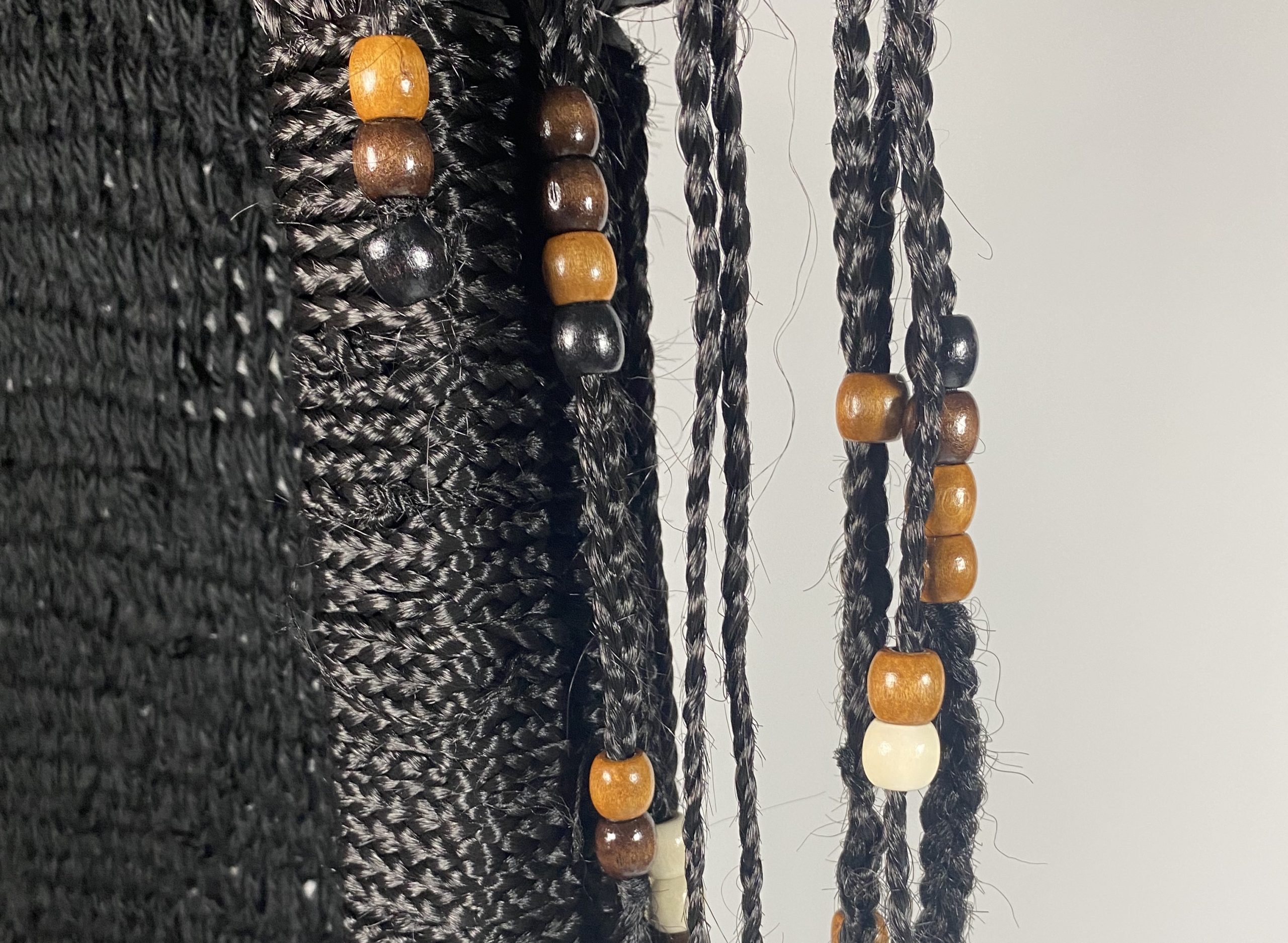The Braided Garden
Chiedza Musiiwa & Mia Wang
B.Arch. '25, Cornell AAP; M.S. AAD '24, Cornell AAP
March 4-22, 2024
John Hartell Gallery, Sibley Hall
Biographies
Chiedza Musiiwa was born and raised in Harare, Zimbabwe. She is a 4th year Bachelor of Architecture student at Cornell University. Musiiwa explores adaptive reuse and Black aesthetics in architecture through her studies.
Mia Wang was born in Inner Mongolia and grew up in Xi’an, China. Her primary interests include art, design, and music.
Exhibit
The Braided Garden aims to draw upon the spatial capacities of hair braiding as a design method. The artists’ research relies on the works of Jamaica Kincaid, particularly her book My Garden, as well as archival images rendering the long-standing history between hair and land. Combining theory, history, and many precedents, including the works of Sonya Clark, Shani Crowe, and Lorna Simpson, Musiiwa and Wang use this installation to explore the term “root.” They use the term to play on its bodily and geographic meanings, from the roots of the scalp, to the roots of the earth. This doubleness exists in the geographic context of the plantation and the home, allowing the artists to think about labor and care in the domestic realm. In South American plantation sites, cornrows were used as maps that could be read as escape routes for enslaved people, with styles and elements that indicated geographic features such as rivers and mountains. After recognizing this historical connotation, Musiiwa and Wang shifted their attention to the craft and aesthetics of hair braiding. The “sister chair” provides two soft seats for both the person being braided and the braider; the two seats are integrated into one another creating one piece of furniture. Because of this, the person having their hair done can lean on the braider’s legs, highlighting the intimacy of the process, much like being braided against a mother’s knees. This sister chair reflects the artists’ contemplation and understanding of a person’s connection to their roots and the frustration of mapping these ruptured roots.
